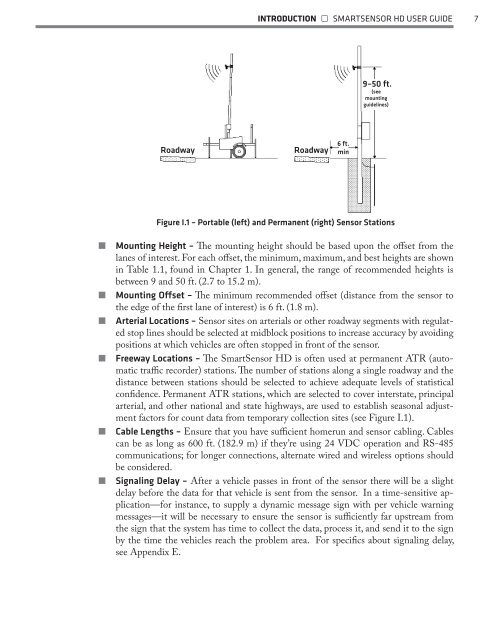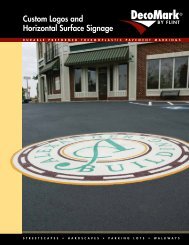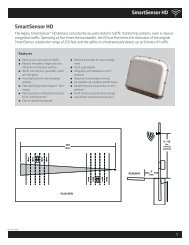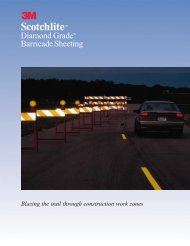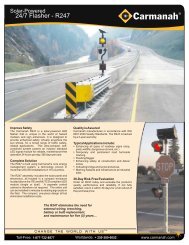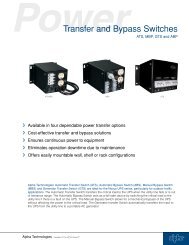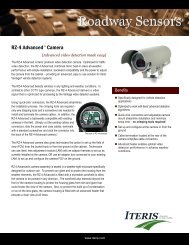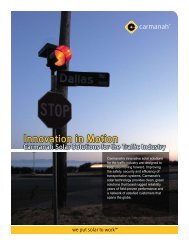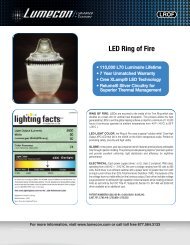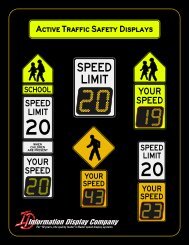SmartSensor HD - Interprovincial Traffic Services
SmartSensor HD - Interprovincial Traffic Services
SmartSensor HD - Interprovincial Traffic Services
You also want an ePaper? Increase the reach of your titles
YUMPU automatically turns print PDFs into web optimized ePapers that Google loves.
INTRODUCTION • SMARTSENSOR <strong>HD</strong> USER GUIDE 79–50 ft.(seemountingguidelines)RoadwayRoadway6 ft.minFigure I.1 – Portable (left) and Permanent (right) Sensor Stations˽˽˽˽˽˽˽˽˽˽˽˽Mounting Height – The mounting height should be based upon the offset from thelanes of interest. For each offset, the minimum, maximum, and best heights are shownin Table 1.1, found in Chapter 1. In general, the range of recommended heights isbetween 9 and 50 ft. (2.7 to 15.2 m).Mounting Offset – The minimum recommended offset (distance from the sensor tothe edge of the first lane of interest) is 6 ft. (1.8 m).Arterial Locations – Sensor sites on arterials or other roadway segments with regulatedstop lines should be selected at midblock positions to increase accuracy by avoidingpositions at which vehicles are often stopped in front of the sensor.Freeway Locations – The <strong>SmartSensor</strong> <strong>HD</strong> is often used at permanent ATR (automatictraffic recorder) stations. The number of stations along a single roadway and thedistance between stations should be selected to achieve adequate levels of statisticalconfidence. Permanent ATR stations, which are selected to cover interstate, principalarterial, and other national and state highways, are used to establish seasonal adjustmentfactors for count data from temporary collection sites (see Figure I.1).Cable Lengths – Ensure that you have sufficient homerun and sensor cabling. Cablescan be as long as 600 ft. (182.9 m) if they’re using 24 VDC operation and RS-485communications; for longer connections, alternate wired and wireless options shouldbe considered.Signaling Delay – After a vehicle passes in front of the sensor there will be a slightdelay before the data for that vehicle is sent from the sensor. In a time-sensitive application—forinstance, to supply a dynamic message sign with per vehicle warningmessages—it will be necessary to ensure the sensor is sufficiently far upstream fromthe sign that the system has time to collect the data, process it, and send it to the signby the time the vehicles reach the problem area. For specifics about signaling delay,see Appendix E.


